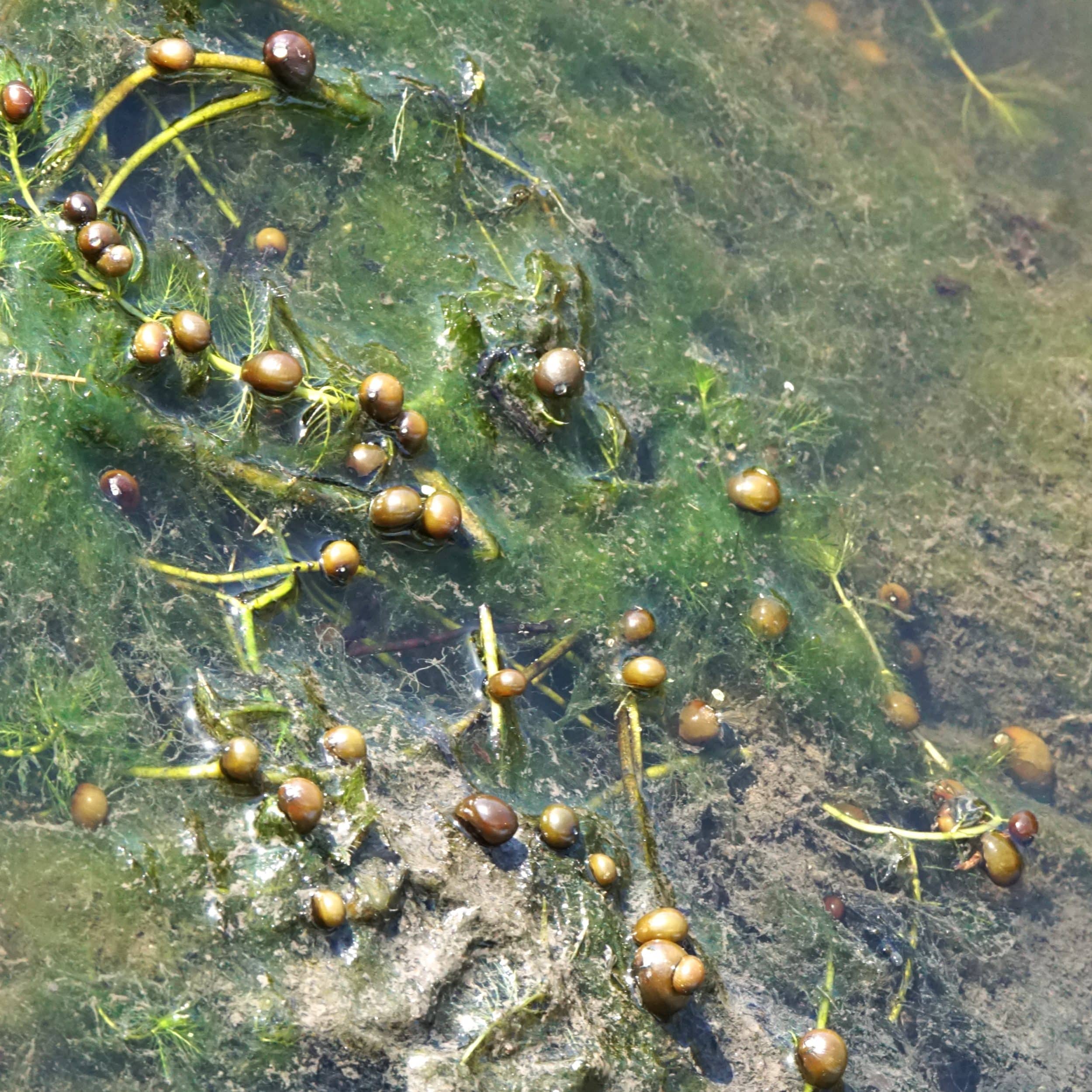Brackish water marshes along our coastline are home to a number of plants and animals that take advantage of the nutrient rich waters that define estuaries – coastal areas where freshwater and saltwater mix. The result can be large populations that take advantage of the rich food sources that are driven by these conditions – including Olive Nerite snails.
These creatures are aptly named, given their resemblance to green olives, but are even more interesting viewed up close. The distinctive black wavy lines on their shells are both elegant and beautiful. And like other estuarine species, they can be abundant, especially associated with their main food source – algae. My friend Curtis Makamson spotted a raft of nerites on a mat of algae recently and asked the question – Qu’est Que C’est? This story is for Curtis.

As a researcher of brackish marshes, I have encountered these snails many times and marvel at their abundance and way of life. Apart from being found on rafts of algae, they can be found on the blades of tape grass and the marsh surface, feeding on the thin layer of algae on tape grass, the stems of marsh grass, or the mud. It is not uncommon to see snails of all sizes, especially in summer when they are at their peak of reproduction.
This activity is also characterized by abundance, as any given female can produce numerous egg cases (in clutches of 8-10 at a time), each with upwards of 100 eggs, with clutches laid multiple times during the warm months of the year. Commonly placed on the backs of other snails or any other hard surface (like the twig in the photo), it is easy to spot rows of these tiny, round, white cases.
Olive Nerites grow rapidly, reaching upwards of about ½ inch in diameter, reportedly living from 3-4 years, but perhaps more. On older snails, it is not uncommon to see erosion of the shell on the oldest parts, as the protective organic outer layer (the periostracum) wears away over time. The openings of older snails also commonly have missing pieces, likely from crabs or other invertebrate predators trying to break into the shell.
But the shells are quite hard and resistant to everything other than birds and fish that swallow them whole, especially the small, young of the year. But fear not, given the staggering numbers of these snails, they are not in the least threatened. They can be found from nearly freshwater reaches of coastal rivers to salinities of about 25 parts per thousand.
So next time you venture to a local brackish marsh, take a look as Curtis did, and the Green Olives of the marsh will appear.
Hope to see you in our great outdoors!
Photo of the raft of olive nerites, courtesy of Curtis Makamson.